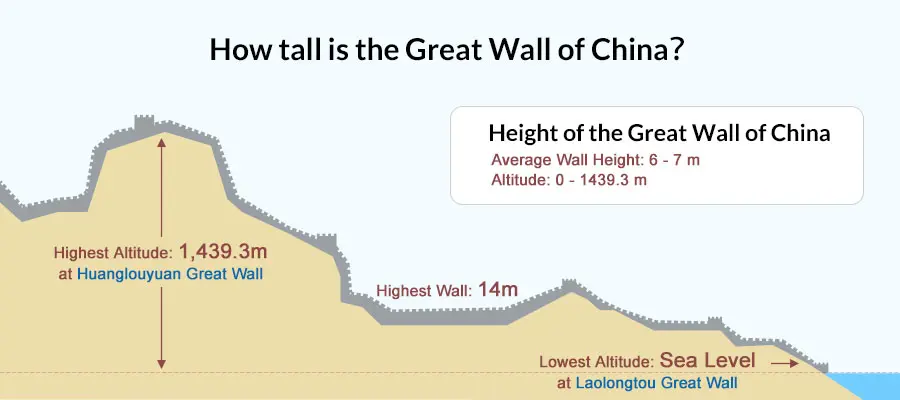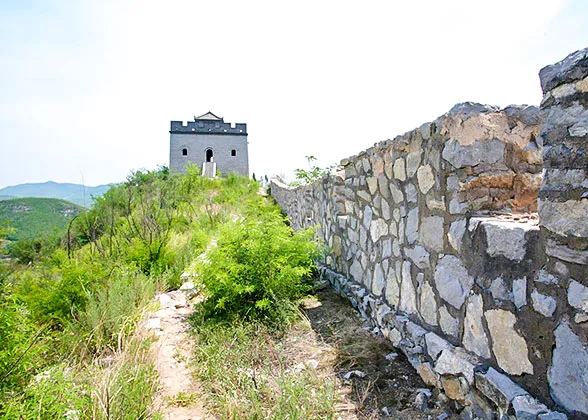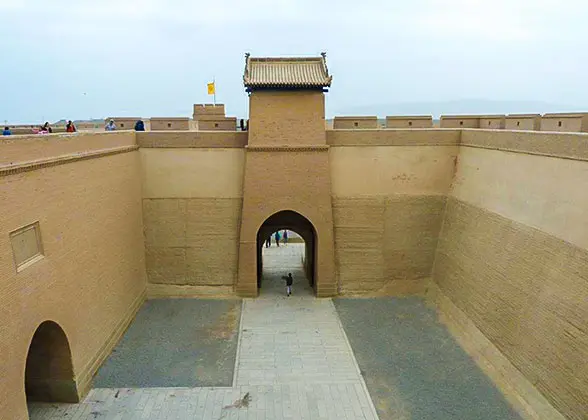How tall is the Great Wall of China?
Average height: 6 - 7 meters (20 - 23 feet)
What remains of the Great Wall was mostly built in the Ming Dynasty (1368 - 1644). Its average height ranges from 6 to 7 meters (20 to 23 feet), with the lowest sections measuring approximately 3 meters (9.8 feet) and the tallest reaching around 14 meters (46 feet). About the altitude, Huanglouyuan Section stands at the highest altitude, about 1,439.3 meters (4,722 feet), while the lowest point is Laolongtou Section, which is just above sea level.
 |
Is the height of the Great Wall the same everywhere? Why?
Sections in areas frequently targeted by foreign invaders or those with gentle slopes vulnerable to enemy incursions were constructed taller to enhance defense. Conversely, in regions with naturally steep mountains, the Great Wall was built lower, as the rugged terrain itself served as a formidable natural barrier.
Construction materials also play a crucial role. Sections built with bricks and stones tend to be taller and more robust. In contrast, segments constructed from clay are generally lower, as the material provides less inherent strength for building taller structures.
|
|
What are the heights and altitudes of famous Great Wall sections?
| Section | Height of Wall | Highest Altitude |
|---|---|---|
| Badaling | 6-9 meters (20-30 feet) | 888.9 meters (2,916 feet) |
| Mutianyu | 6-9 meters (20-30 feet) | 1,039.6 meters (3,410.8 feet) |
| Simatai | Unknown | 986 meters (3,235 feet) |
| Jinshanling | 5-8 meters (16-26 feet) | 700 meters (2,300 feet) |
| Jiayuguan | 10.7 meters (35 feet) | 1,700 - 1,800 meters (5,600 - 5,900 feet) |
How can the Great Wall defend against since the wall is not too high?
The fact is that the Great Wall is a complete defensive system instead of a simple wall.
1. First of all, there were some strongholds near the wall. Before the enemies attacked the wall, they needed to clear these strongholds. However, the enemies usually got quite tired when they finished clearing the strongholds. As a result, they were easily defeated or they would go back to have a rest and get their strength back. During this time, the soldiers on the wall would rebuild the firm defensive line.
2. Many sections were built along the mountain ridges. In this case, the enemies could be stopped by these natural barriers at first. Even if they came up, their power would be weakened a lot.
3. Besides, the beacon towers on the wall could give out a warning of approaching enemies, so the soldiers could get ready for the battle beforehand.
4. The top of the wall is wide enough to convey the necessary materials conveniently. The soldiers could also come to the battle fields along the wall quickly, and this enabled the army to defeat the enemies.
5. The Great Wall is the boundary between northern nomadic tribes and the central plain. It can control trade between them. The nomadic people wanted to sell their goods to the central plain to make a profit, which could in turn strengthen their army. However, the wall limited the economic exchange between these two groups so that the strength of the nomadic group could be weakened to some degree. This action may attack them at the source.
More to read:
- Fun Facts about Great Wall
- Great Wall of China Facts for Kids
- Great Wall of China FAQs
- How long is the Great Wall of China?
- How old is the Great Wall of China?
- How wide is the Great Wall of China?
- When was the Great Wall of China built?
- Where is the Great Wall of China located?
- Who built the Great Wall of China?
- Why was the Great Wall of China built?
Recommended Tours
- Last updated on Jul. 07, 2025 by Sherry Xia -





